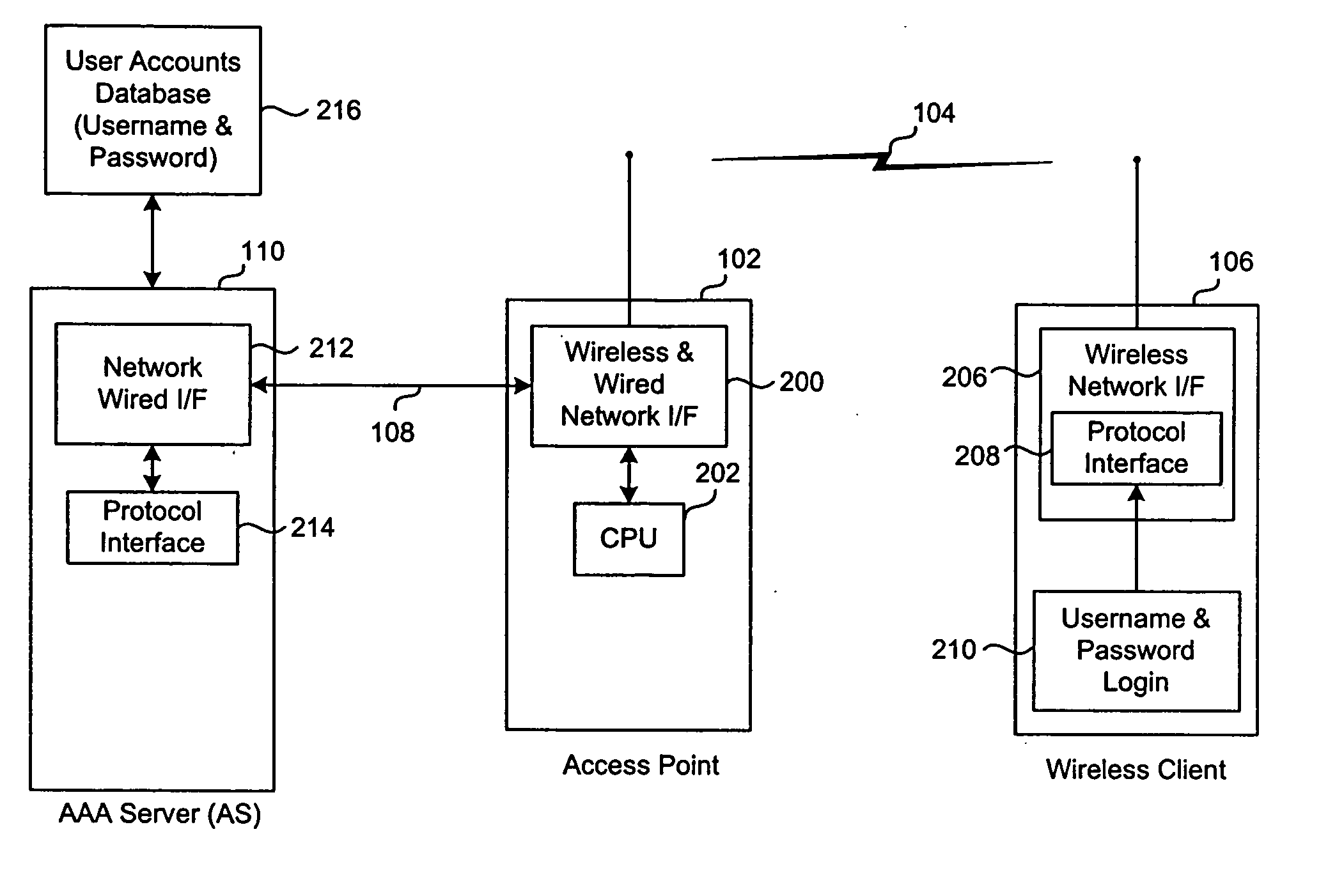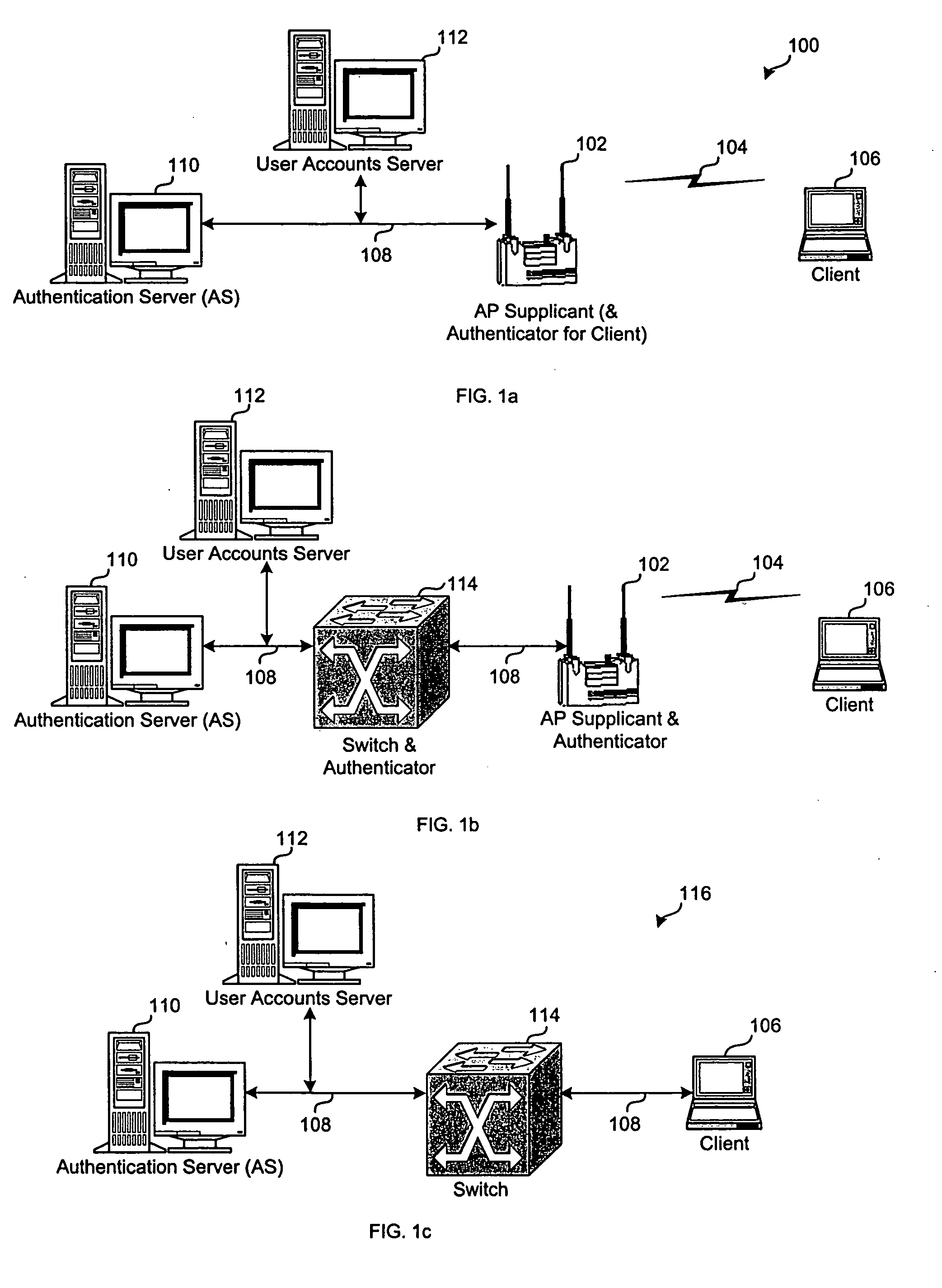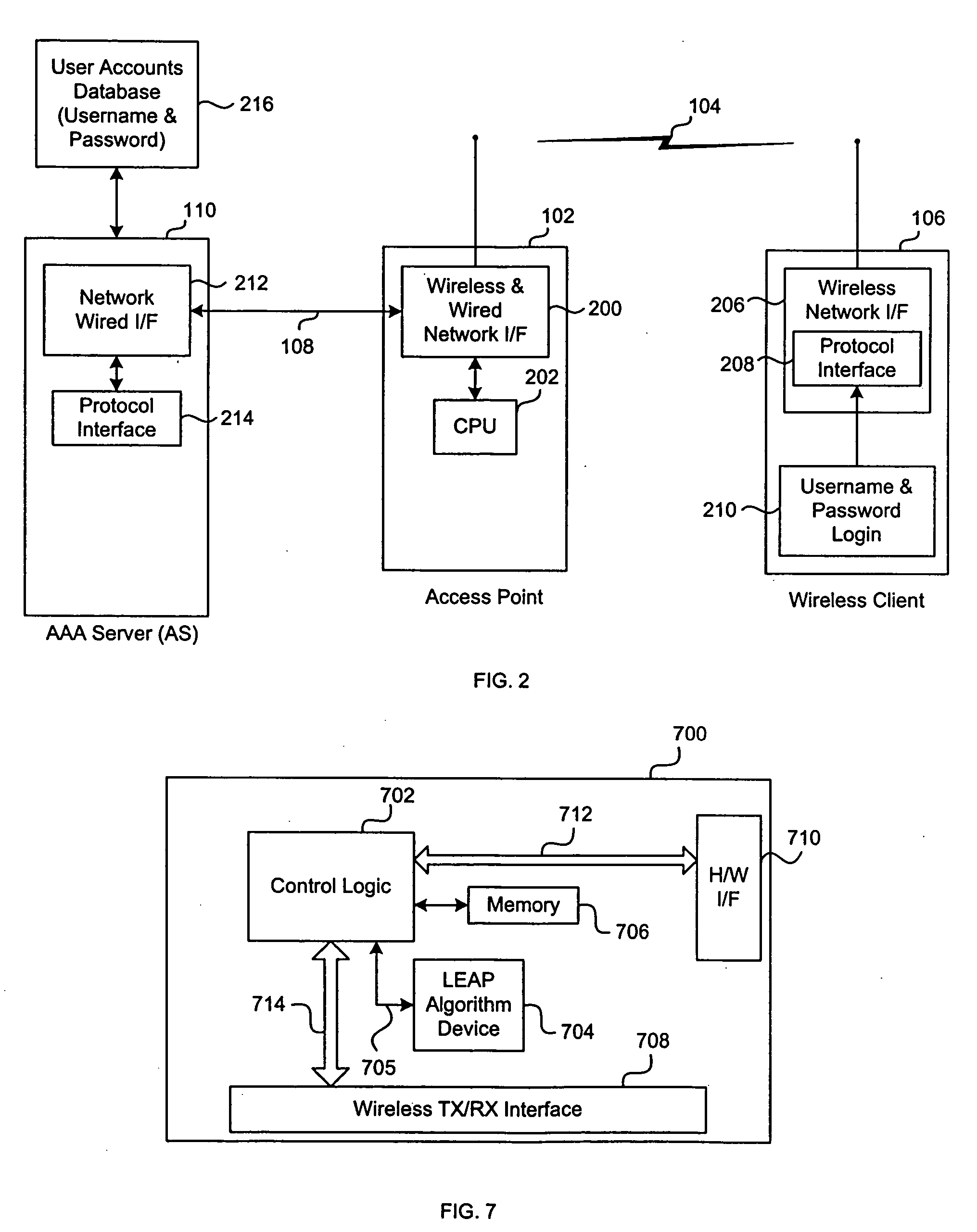Wireless authentication protocol
a wireless authentication and protocol technology, applied in the field of wireless devices, can solve the problems of insufficient mutual authentication, insufficient data, and insufficient data,
- Summary
- Abstract
- Description
- Claims
- Application Information
AI Technical Summary
Benefits of technology
Problems solved by technology
Method used
Image
Examples
Embodiment Construction
[0028] The disclosed wireless authentication protocol utilizes EAP, EAPOL, WEP, RADIUS, resides in the EAP, provides mutual authentication between the network infrastructure and the wireless client, offers secure derivation of random user-specific cryptographic session keys, provides compatibility with existing and widespread network authentication mechanisms (e.g., RADIUS), operates with computational speed, and provides a single sign-on capability that is compatible with popular vendor networking architectures, e.g., by Microsoft™. In that the disclosed wireless authentication protocol resides in EAP, it is hereinafter designated LEAP (Light Extensible Authentication Protocol). Additionally, the disclosed protocol eliminates the need to utilize a public / private key mechanism used in conventional systems. Elimination of the need for the public / private key provides a less computation-intensive protocol requiring less program code that allows the protocol engine to be programmed into...
PUM
 Login to View More
Login to View More Abstract
Description
Claims
Application Information
 Login to View More
Login to View More - R&D
- Intellectual Property
- Life Sciences
- Materials
- Tech Scout
- Unparalleled Data Quality
- Higher Quality Content
- 60% Fewer Hallucinations
Browse by: Latest US Patents, China's latest patents, Technical Efficacy Thesaurus, Application Domain, Technology Topic, Popular Technical Reports.
© 2025 PatSnap. All rights reserved.Legal|Privacy policy|Modern Slavery Act Transparency Statement|Sitemap|About US| Contact US: help@patsnap.com



